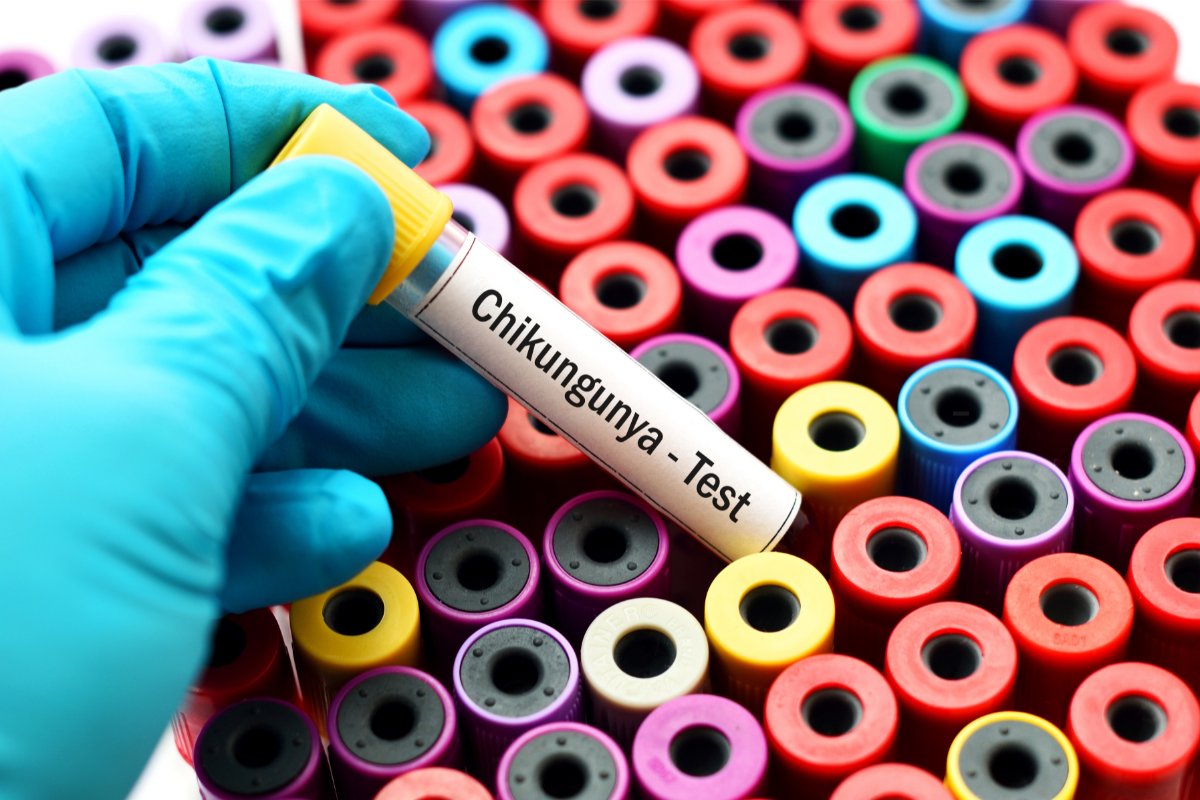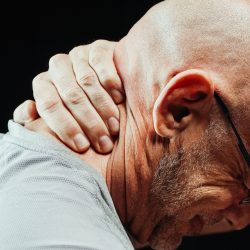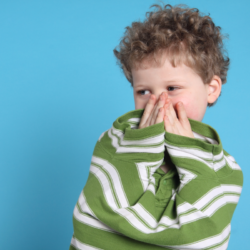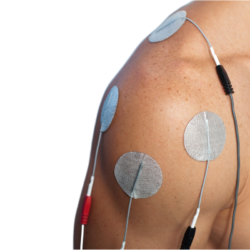Chikungunya is a viral disease transmitted by mosquitoes of the Aedes genus, causing sudden fever, intense joint pain and skin rashes. With the geographical spread of the virus, it is essential to understand its mechanisms, symptoms and modes of transmission.
This article provides a comprehensive overview of the nature of chikungunya, its evolution, its global spread and current preventive measures. You will also discover how the health authorities in France and around the world are working to limit its spread.
What is chikungunya and how does it manifest itself?
In Swahili, “chik” means “to walk hunched over”, illustrating the posture adopted by people suffering from Chikungunya. After an incubation period of two to ten days, a high fever appears, accompanied by severe muscle and joint pains, particularly in the joints (wrists, ankles, phalanges, etc.). Headaches and skin rashes may also appear, and sometimes bleeding from the gums or nose. Chikungunya disease then progresses within a few days, with the fever and skin symptoms disappearing, but the joint pain may last for several weeks.
How does chikungunya develop and where is it circulating today?
Chikungunya is a viral infection transmitted by Aedes mosquitoes, particularly the tiger mosquito, characterised by fever and acute joint pain. Other symptoms include myalgias, headaches, nausea, fatigue and skin rashes. Joint pain, which is particularly disabling, may persist. Diagnostic confusion with dengue fever is possible in regions where the latter is endemic. Treatment is mainly symptomatic, as there is no specific therapy for this disease.
Chikungunya is found in Africa, Asia and the Indian subcontinent. It has now spread to Europe and America. The first transmission in Europe occurred in Italy in 2007, followed by outbreaks in France and Croatia. The virus, an arbovirus, is transmitted by the female mosquitoes Aedes aegypti and Aedes albopictus. These mosquitoes also transmit other arboviruses, such as dengue fever, yellow fever and the Zika virus. The term “chikungunya” comes from the Makonde language and describes the bent posture of people affected by joint pain.
After an incubation period of 2 to 10 days, the infection manifests itself as incapacitating joint pain, headaches, fever, muscle pain, skin rashes, inflamed lymph nodes and sometimes conjunctivitis. Serious cases, such as meningoencephalitis, have mainly affected the elderly and immunocompromised, and newborn babies infected in utero.
Prevention is therefore based on individual protection against mosquito bites and limiting their reproduction. Although there is no specific treatment or vaccine, symptom management remains essential.
How is chikungunya transmitted by the tiger mosquito?
Chikungunya, transmitted by the Aedes aegypti and Aedes albopictus mosquitoes, which also carry dengue fever and Zika, is spread when a healthy mosquito bites an infected person, ingesting the virus. After a multiplication phase, this virus can be transmitted to other humans. In terms of contagiousness, infected people can transmit the virus to mosquitoes from 1 to 2 days before the onset of symptoms and up to 7 days afterwards. There is also a risk of transmission by blood transfusion. Generally, previous infection confers long-term immunity.
In terms of vertical transmission, the virus can be passed from mother to child during childbirth, with potentially serious consequences for the newborn. This underlines the importance of intensifying mosquito control before delivery to prevent infection of the mother.
Only female mosquitoes, which require blood to develop their eggs, carry the virus. Chikungunya belongs to the Togaviridae family and has two genetic types, one in West Africa and the other in East and Southern Africa. Genetic mutations can influence the infectious capacity of mosquitoes.
Structurally, the chikungunya virus measures 70 nanometres and is characterised by a capsid and an envelope. Its error-prone polymerase leads to frequent mutations. Although certain treatments, such as chloroquine and ribavirin, have a limited effect, they nevertheless represent therapeutic options.
Finally, in utero transmission of chikungunya can cause serious neurological damage to the foetus. Mosquitoes become vectors after feeding on the blood of an infected person. Effective prevention therefore involves not only protection against bites, but also the proactive elimination of breeding sites, a more effective strategy than targeting adult mosquitoes.
How can chikungunya be diagnosed and its transmission prevented?
The Regional Health Agencies (ARS), in collaboration with the departmental councils and local authorities, are conducting information and communication campaigns to prevent and manage chikungunya. From 1 May to 30 November, they are stepping up surveillance of human cases in departments where the Aedes albopictus mosquito is present. Travellers returning from endemic areas with symptoms should report them to the ARS for biological confirmation. Suspected cases are advised to protect themselves from mosquito bites and to stay at home to avoid transmission.
Medical management is limited to symptomatic treatment, including analgesics and anti-inflammatories, without preventing chronic forms of the disease. Prevention is based on individual and collective mosquito control. Individuals should limit their exposure to bites by wearing long clothing, using skin repellents and insecticides on clothing and mosquito nets. Collective measures include spraying insecticides and eliminating breeding sites.
The virus can be detected by RT-PCR tests in blood samples during the first week of the disease, and serological tests for antibodies can be used after this period. There is currently no licensed vaccine against the virus.
The best protection is to avoid mosquito bites . Suspect patients should avoid being bitten during the first week of the illness to avoid transmitting the virus. Mosquito control involves reducing breeding sites and using insecticides. During outbreaks, it is advisable to wear covering clothing, use insecticide-impregnated mosquito nets and repellents based on DEET, IR3535 or icaridine. Travellers in high-risk areas should adopt the same precautions and check that their accommodation is equipped with mosquito nets.
What is the current epidemiology of chikungunya worldwide?
The epidemiology of chikungunya, a disease transmitted by Aedes mosquitoes, has evolved since it was first identified in Tanzania in 1952. The disease, characterised by fever and joint pain, has spread across Africa, Asia and, more recently, Europe and America. Let’s take a look at the changes in its geographical distribution, the mechanisms of transmission, and the factors influencing the proliferation of vectors, which are essential to the development of prevention and control strategies .
Worldwide
In 2005, a chikungunya epidemic hit Réunion, marking the start of an international spread. In 2007, Europe, particularly Italy, recorded its first cases, linked to tourist travel. Currently, 78 departments in France are subject to increased surveillance due to the presence of the tiger mosquito, the vector of this disease. Although native cases are still rare in France, the authorities are paying particular attention to people who are immunocompromised or elderly.
First discovered in Tanzania in 1952, chikungunya has long circulated in Africa and Asia, particularly in India, where there have been around 2 million cases since 2006. In 2007, an epidemic hit Italy, and in 2010 and 2014, France recorded native cases. New Caledonia in 2011, the West Indies in 2013 and French Polynesia in 2014 also experienced epidemic episodes.
In Europe, the authorities are actively monitoring the risk of Aedes albopictus spreading chikungunya. Since 2006, they have set up surveillance systems and compulsory reporting of cases.
In Africa, the virus circulates in a forest cycle involving primates and sylvatic mosquitoes. In Asia, it develops mainly in urban areas, with Aedes aegypti and Aedes albopictus as the main vectors. Epidemics are frequent, particularly in India.
In America, the epidemic began in 2013 in the West Indies and rapidly spread to the continent. French Guiana had already recorded cases in 2006. Since 2004, chikungunya has become more frequent and more widespread. It is now present in more than 110 countries, with urban outbreaks recorded in Thailand and India as far back as the 1960s and 1970s. Regions where Aedes aegypti or Aedes albopictus live are now experiencing local transmission of the virus.
In France
A plan to combat the spread of chikungunya has been in force in mainland France since 2006, combining surveillance of mosquitoes and cases of infection, coordinated by Santé publique France. The plan is based on a number of key elements:
-
- Mandatory reporting to the Regional Health Agency (ARS) of all confirmed cases of chikungunya.
- Contribution of a network of volunteer laboratories to the diagnosis process, with results sent to Santé publique France.
- Increased surveillance in departments where the mosquito vector is active (from 1 May to 30 November), including rapid notification to the ARS of suspected imported cases (people returning from a high-risk area within the last 15 days), rapid diagnosis and the activation of targeted vector control measures around these cases. In 2021, 58 départements were affected, according to Santé Publique France.
In the French overseas departments, similar measures have been applied since 2006, under the supervision of the Regional Health Agencies and the Interregional Epidemiology Units (Cire).
Conclusion
The global spread of chikungunya and its ability to establish itself in new territories is a reminder of the urgent need for constant epidemiological monitoring and rigorous prevention in the face of a virus with no specific curative treatment. From Africa to Europe, via the Americas, transmission by Aedes mosquitoes and the complications associated with severe forms of the disease reinforce the need for a better understanding of the mechanisms of spread and infection.
The preventive approach, based on mosquito control and individual protection, remains the most effective strategy to date. But to limit the impact of the disease on the general population, better information for travellers, early diagnosis and a coordinated response from the health authorities are essential.
While research into vaccines is progressing, it is vital to remain alert to clinical signs and to support sufferers with appropriate symptomatic care. We must not overlook the contribution of certain natural approaches, particularly aromatherapy, which can offer additional relief from persistent joint pain associated with chikungunya.
Sources
- https://www.pasteur.fr/fr/centre-medical/fiches-maladies/chikungunya#rmission-et-squelles
- https://pasteur-lille.fr/centre-prevention-sante-longevite/vaccins-et-voyages/chikungunya/
- https://sante.gouv.fr/soins-et-maladies/maladies/maladies-infectieuses/article/chikungunya
- https://www.who.int/fr/news-room/fact-sheets/detail/chikungunya
- https://www.inserm.fr/actualite/dengue-et-chikungunya-cellules-minoritaires-cle-controle-infection/
- https://fr.wikipedia.org/wiki/Chikungunya#Premier_vaccin_commercialisé





